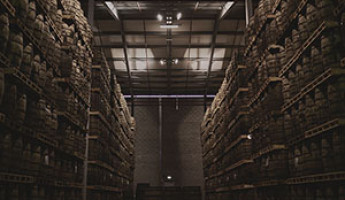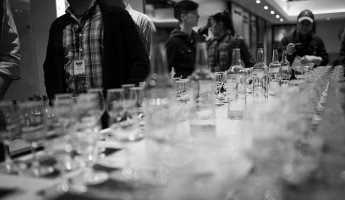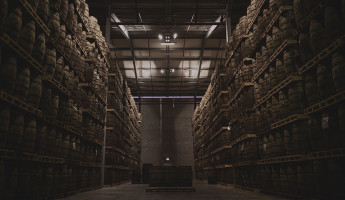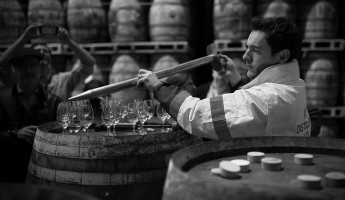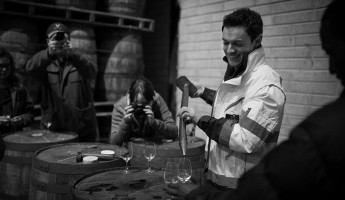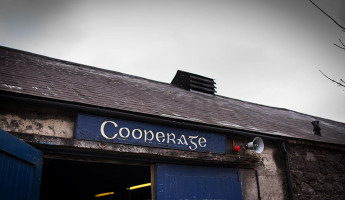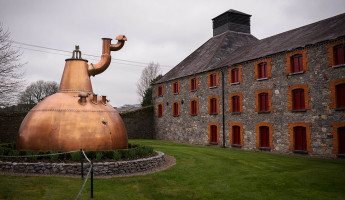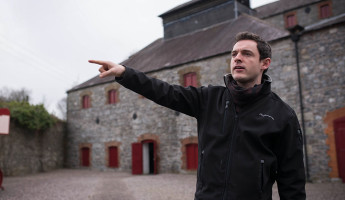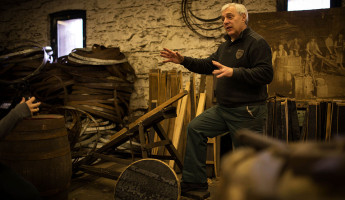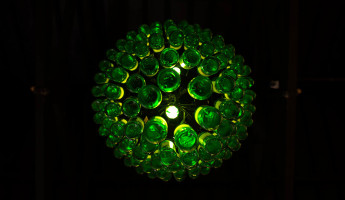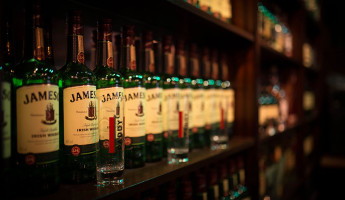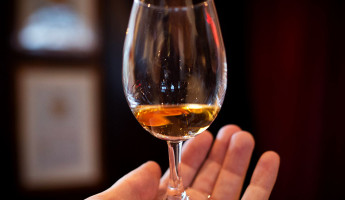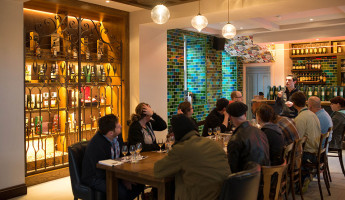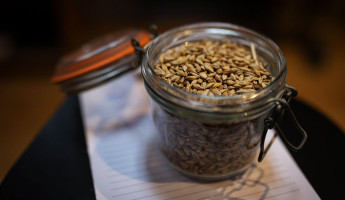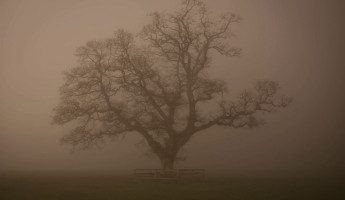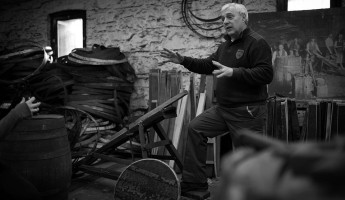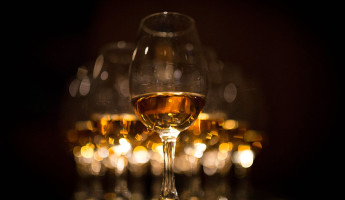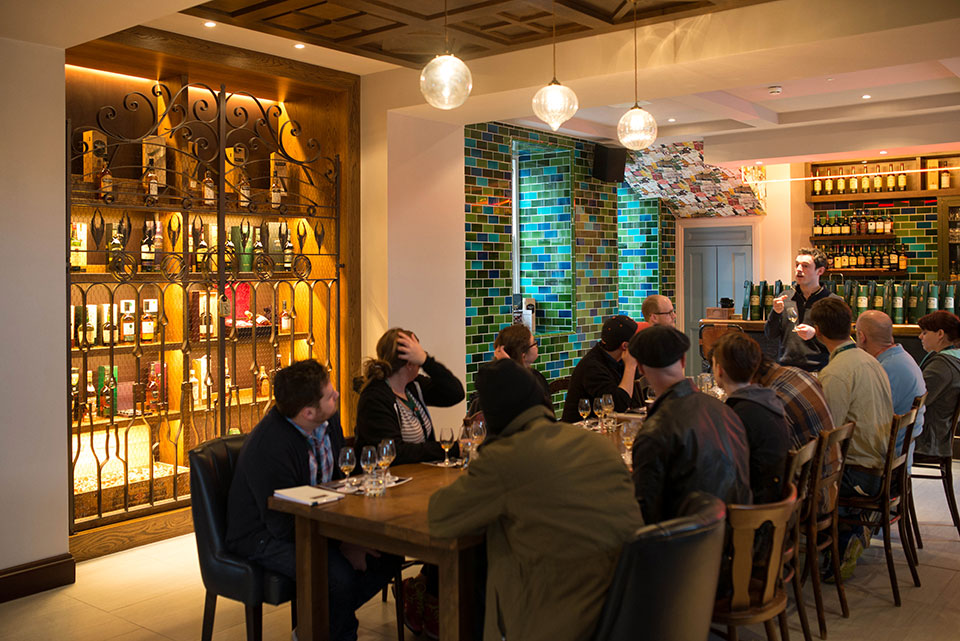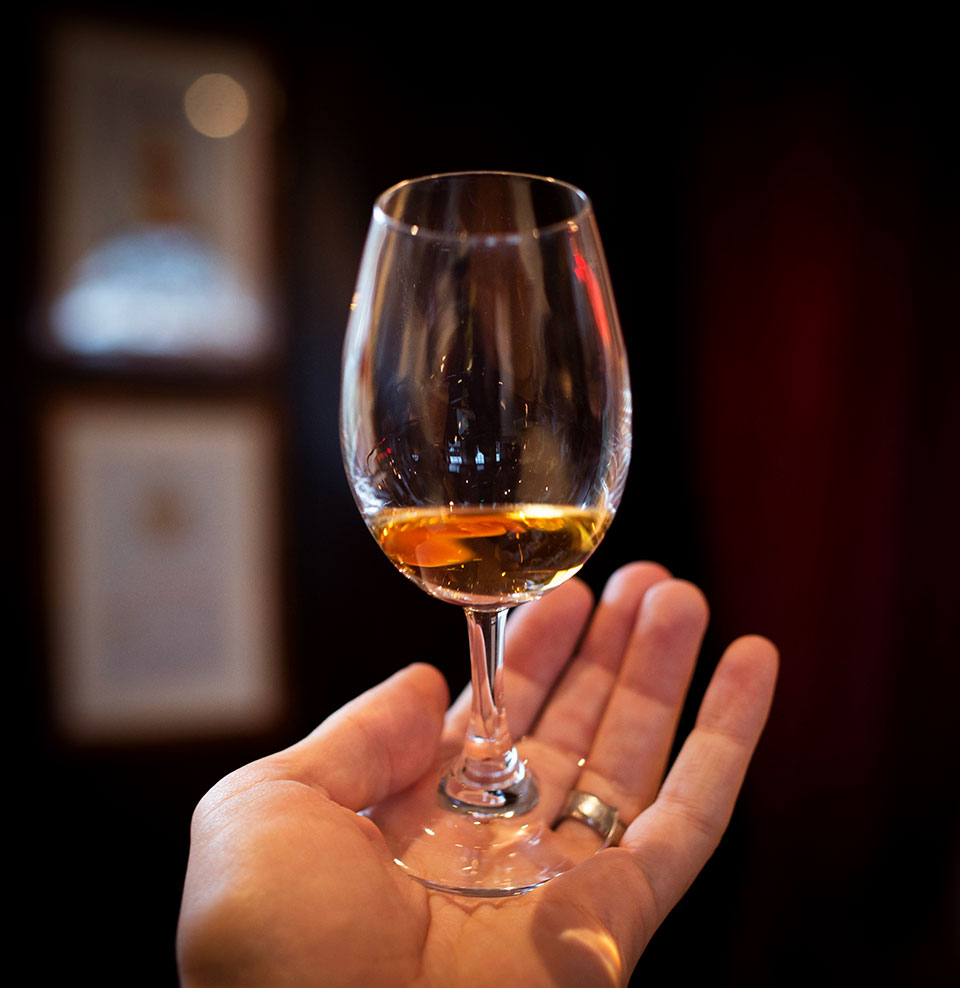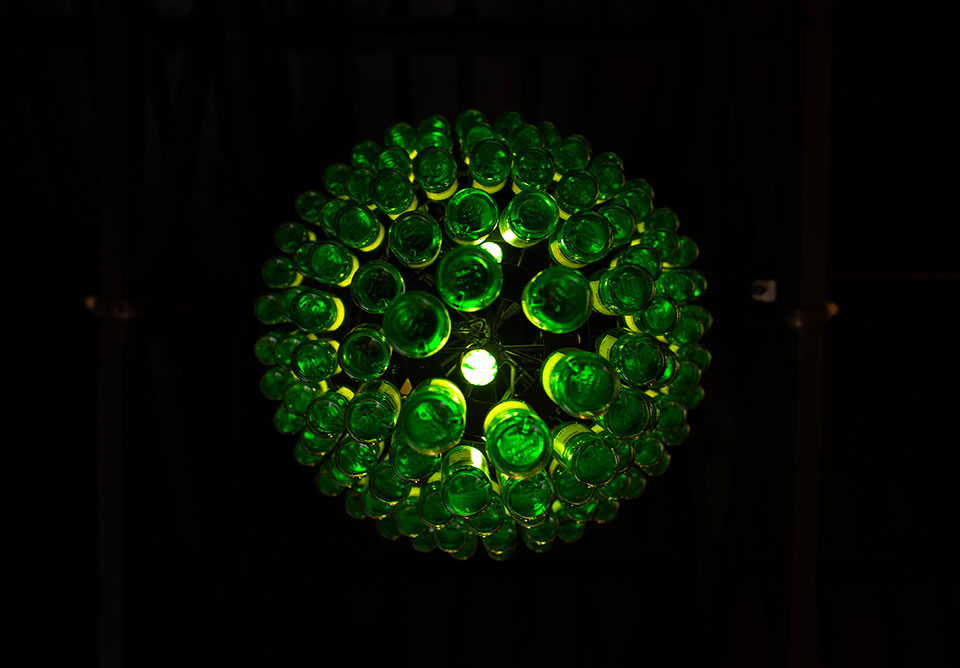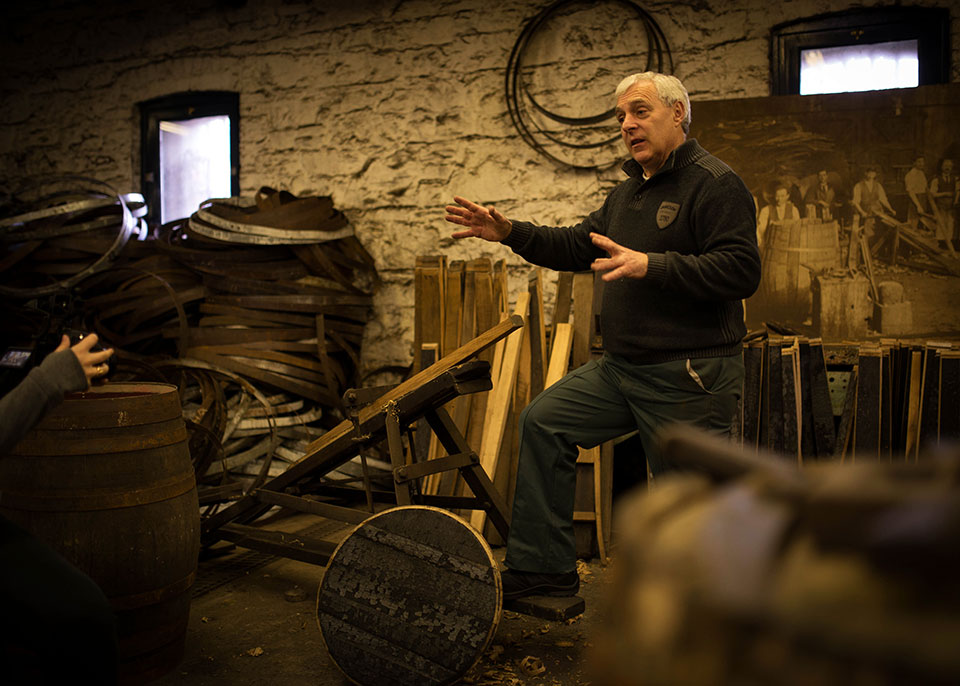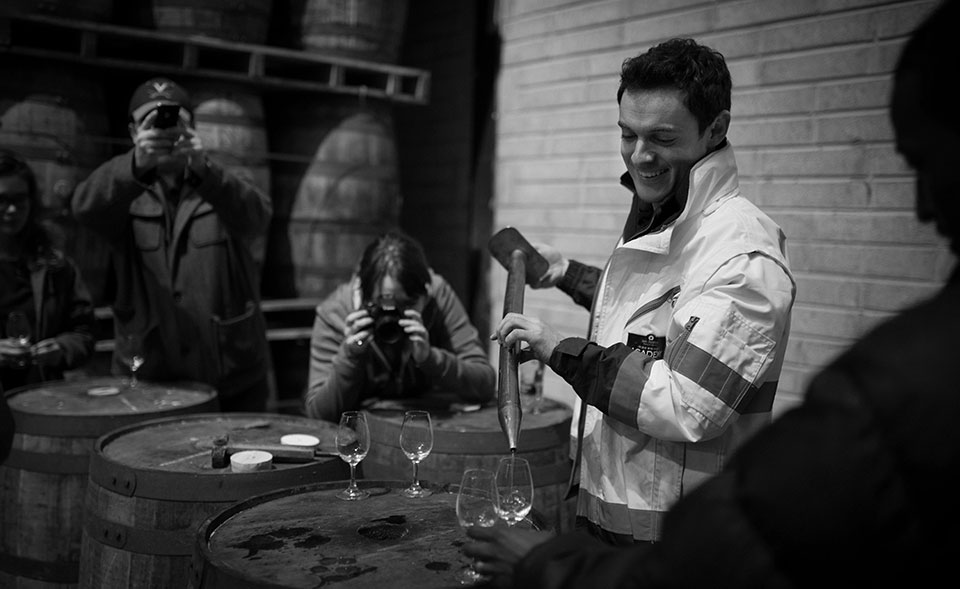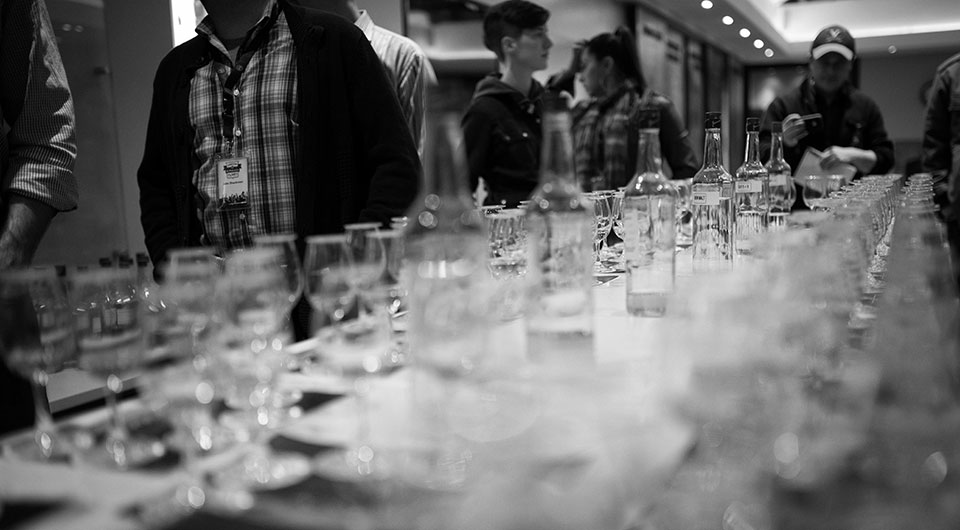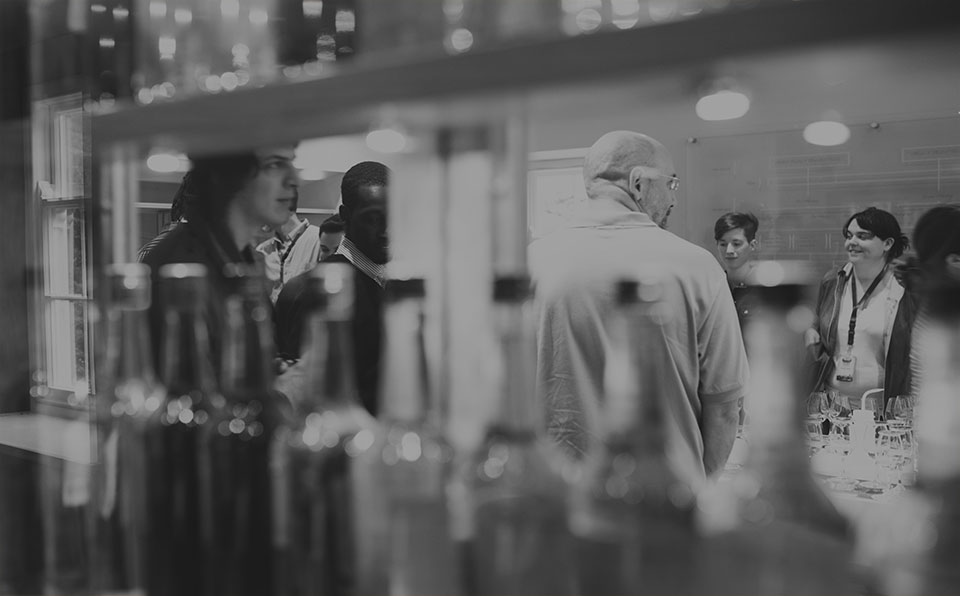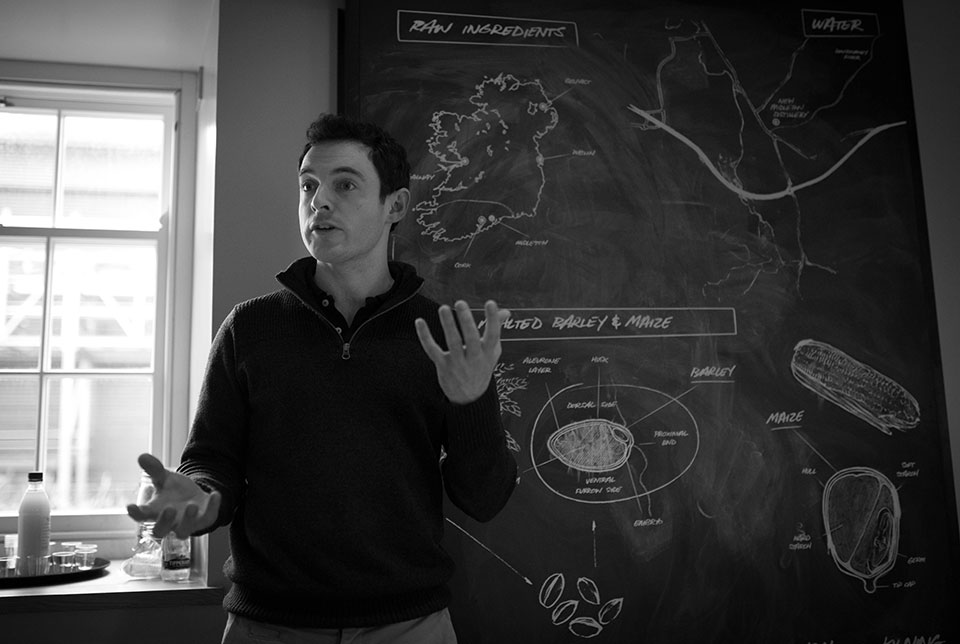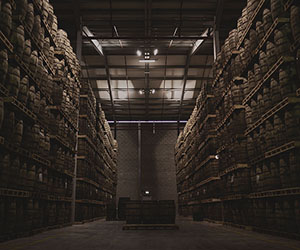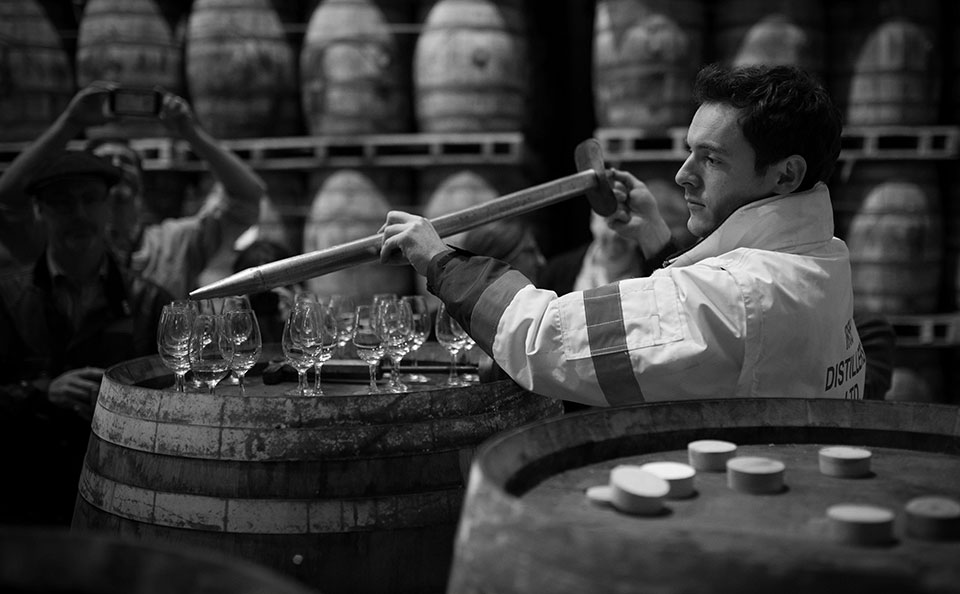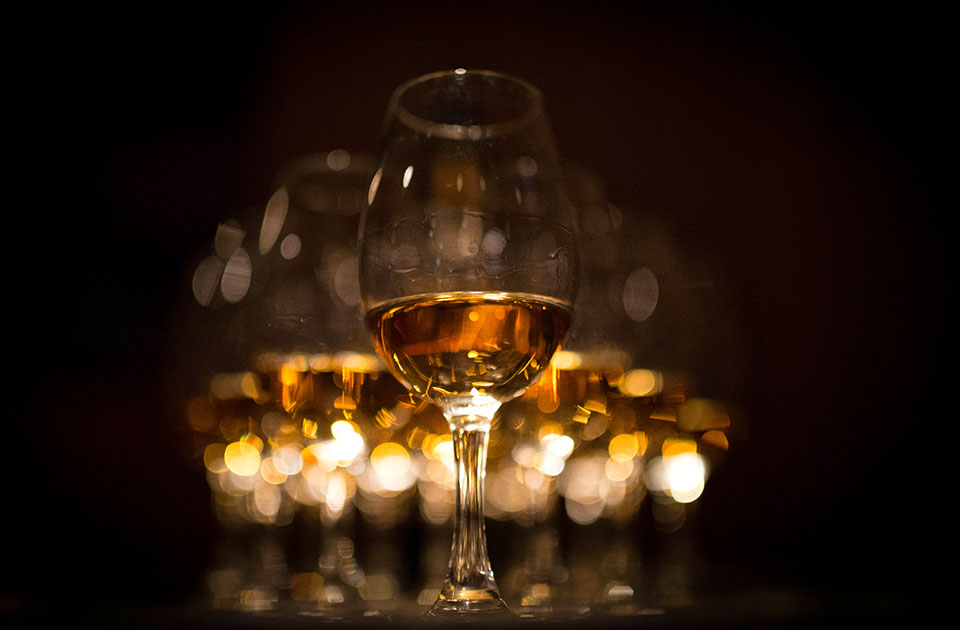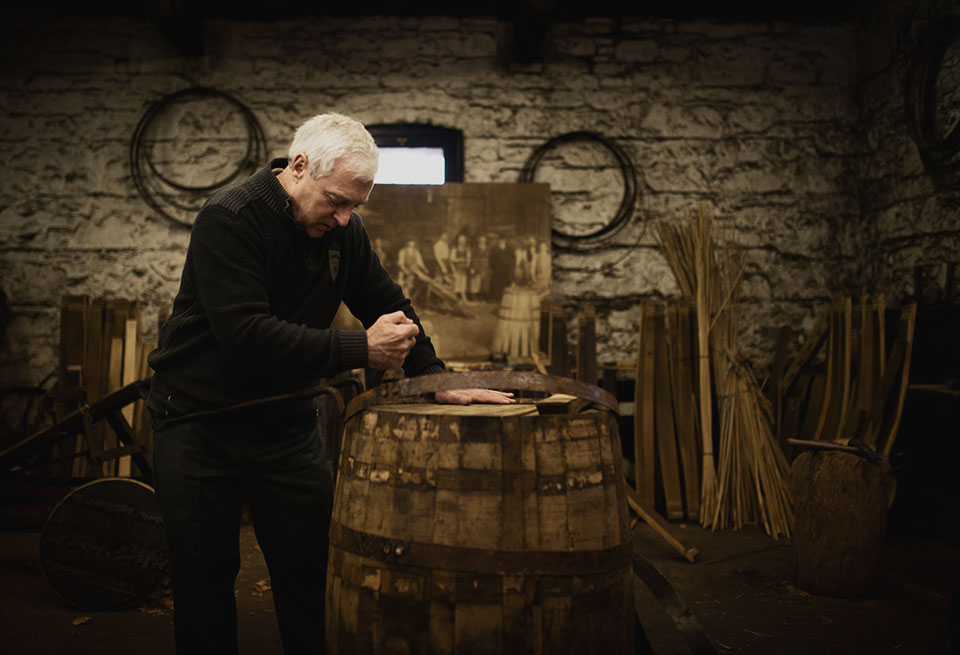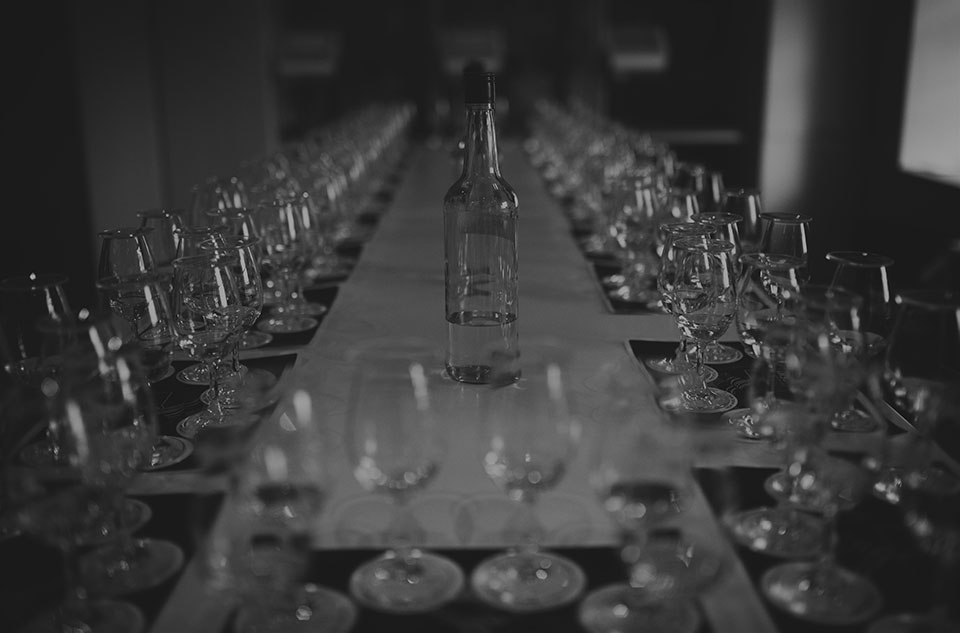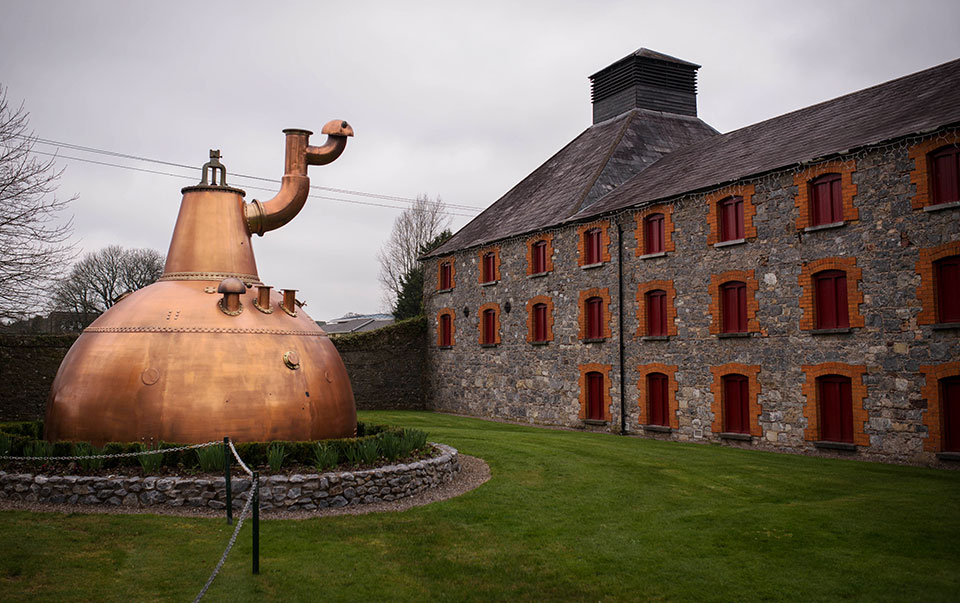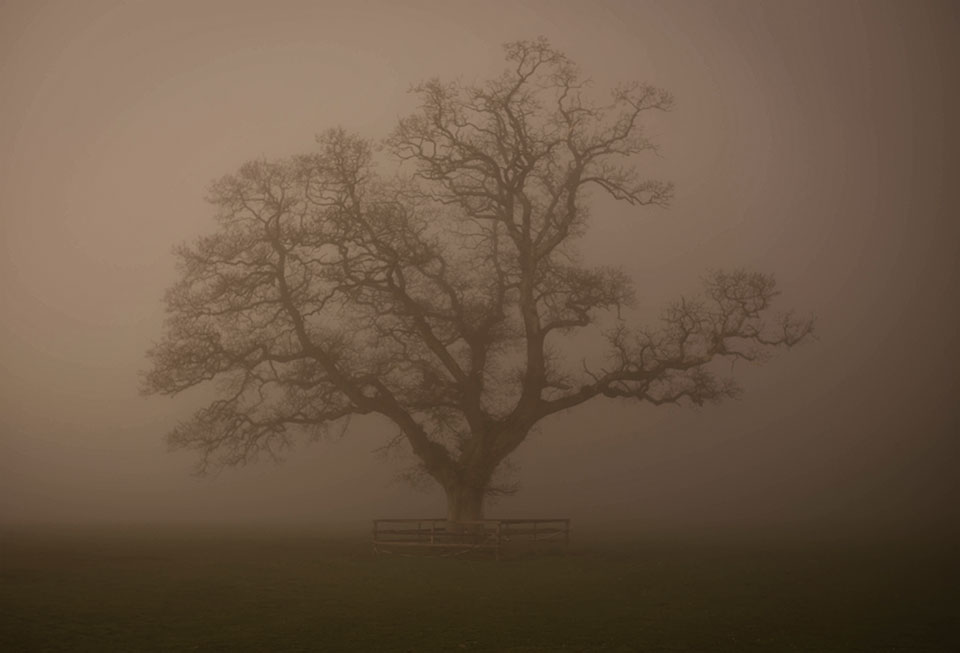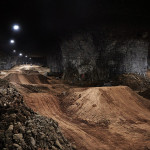View in gallery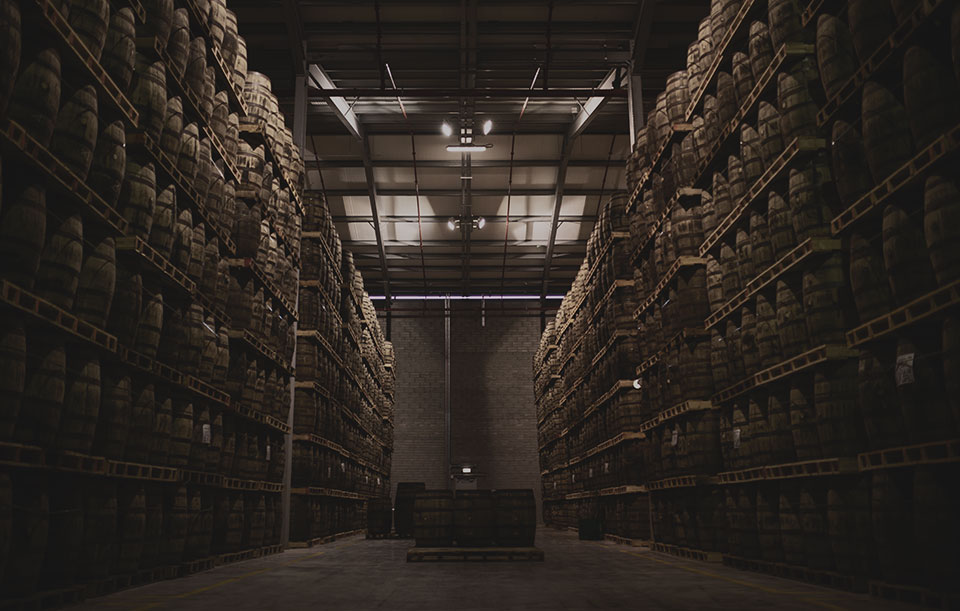
In the native tongue of the Emerald Isle, the Irish have called whiskey “Uisce Beatha” for centuries. The monks who coined the term in the middle ages did so reverently, as their name for this liquid gold translates to English as “Water of Life”. Much has changed since the first glass of “uisce” was poured, but much remains the same. The good people at Jameson Irish Whiskey invited me to their home to explore the story behind the bottle, the craft that distills it today, and all that has changed and stayed the same since the day the story began.
I arrived to County Cork early in the morning, under a dense fog that didn’t rise for days. Beneath the thick blanket of mist, green pastures dotted with cottages and cattle crept into view. Hills rolled and rivers reached into a landscape that has been so aptly described by the poets, authors and directors who came before. There’s a certain serenity to it, a peacefulness somewhere between soothing and sedative. These lands and their waters are all a part of the story I set out to study in Ireland– from the vast fields of barley to the historic Dungourney River.
As we celebrate with all of our friends who make St. Patrick’s Day great, we raise a glass to Jameson for sponsoring this story.
View in gallery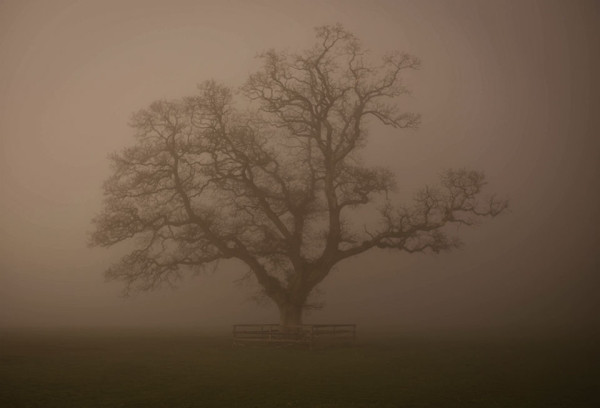 An old oak stands silently in the dense night fog near Castlemartyr, Ireland.
An old oak stands silently in the dense night fog near Castlemartyr, Ireland.
The Spirit of the Land: the Three Ingredients of Irish Whiskey
The Dungourney River has been a part of Irish Whiskey history for hundreds of years. It has provided both water and power to the Midleton Distillery near Cork since the 17th century, and it continues to be an essential element of Jameson’s Irish Whiskey production today. Pure Irish water is one of three key elements that go into every barrel of spirit Jameson produces, making the Dungourney River the heartbeat of the Midleton Distillery.
The Dungourney and many rivers like it also support tillage farms that surround Midleton, Cork and the rest of Ireland beyond. A group of more than 100 local farmers produce barley for the Midleton Distillery, sending tens of thousands of pounds of both malted and unmalted barley to Midleton every day. Beneath Barley’s tough exterior is a rich starch that is processed into a sugar solution in a boiling bath that lasts for nearly 100 hours at a time. The result is wort, a sweet filtered solution that needs just one more ingredient to become a whiskey building block.
Beyond the water and the barley, this wort solution must be fed to a special yeast to yield an alcoholic beverage. The people at the Midleton Distillery use Saccharomyces Cerevisiae, a brewer’s yeast that consumes the barley wort in massive containers to produce beer. Since Jameson began producing whiskey, this beer has been the primary building block of its product. It is the final step before distillation, the process by which beer is turned into the high-alcohol spirits that are aged into fine Irish whiskey.
View in gallery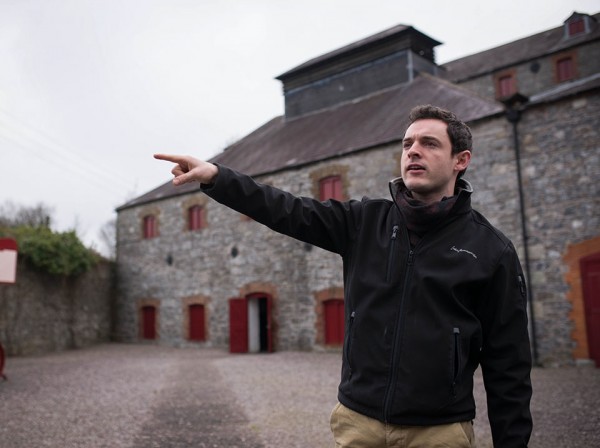 International Whiskey Ambassador David McCabe discusses the craft of Jameson Irish Whiskey.
International Whiskey Ambassador David McCabe discusses the craft of Jameson Irish Whiskey.
At the Midleton Distillery, I was invited to explore this whole process from start to finish. I held malted barley in my hand and took in its scent, I watched it steep in boiling water, I even tasted the beer produced by the brewer’s yeast. The beer itself was quite drinkable– like a bright wheat beer without hops. I wouldn’t want to pour it into a Weizen Glass with a slice of lemon, however, as this beer has a much more exciting future ahead of it.
The Spirit of the Process: Distillation
View in gallery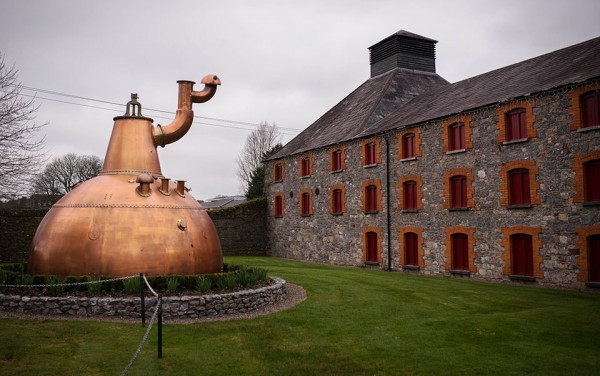
An old copper still sits outside of the Old Midleton Distillery.
In technical terms, distillation is the process of separating liquids based on boiling point. Jameson Irish Whiskey uses a triple-distillation process to turn beer into whiskey in a set of three copper stills. Since alcohol boils at a lower temperature than water, the people at Jameson boil their beer and condense the rising steam into a refined product. This process happens three times, and the final step yields a pure, crystal clear spirit.
At the New Midleton Distillery, the recently-completed factory next door to the original, the same copper still process continues today. Three massive copper stills, soon to be joined by three more, boil beer into spirit around-the-clock. Customized, highly-technical computer systems monitor every step of the process from the arrival of the grain to the distillation of the beer. Spirits can be tested on the spot at a set of faucets next to a high-tech display, while thousands of gallons of beer boil in the background.
At the Irish Whiskey Academy, a hands-on classroom for Jameson employees and guests, I was invited to experience the distillation process on a smaller scale. Ambassador David McCabe presented a series of spirits in various states of distillation and aging, and invited me to taste each one and refine another to its final distilled state. The result showed not only how far the spirit had come since it was first brewed, but also how important the next step is in the whiskey-making process.
View in gallery Glasses of distilled spirits await tasting and refinement at the Irish Whiskey Academy.
Glasses of distilled spirits await tasting and refinement at the Irish Whiskey Academy.
The Aging of the Spirit: from Barrel to Bottle
View in gallery
5th generation cooper Ger Buckley instructs the group on the timeless tradition of barrel making and its impact on whiskey aging.
By legal definition, a spirit must be aged for three years in wooden casks for it to be called Irish Whiskey. Jameson Irish Whiskey, however, is matured between 5 and 7 years in wooden barrels of various sizes, ages and materials. With over 1,000,000 barrels on site, aging Irish Whiskey at this very moment, it’s down to one man to manage this important step in the production of Jameson’s lifeblood.
Ger Buckley is a 5th generation cooper, a barrel-maker who manages the selection, care and quality of the inventory of barrels at the Midleton Distillery. His role is far from ceremonial, it is essential to the craft of Jameson Irish Whiskey and there are few like him in the known world. Buckley is a celebrated authority on cooperage, a process of barrel making and maintenance that has changed little in thousands of years. His tools are ancient in many cases, using a collection of wood cutting and shaping tools that have been passed down from his father and his father’s father before him. The Buckley’s have built barrels for five generations, and to see Ger perform his family’s craft is a genuine treat.
View in gallery Buckley disassembles, inspects and rebuilds a barrel with stunning dexterity.
Buckley disassembles, inspects and rebuilds a barrel with stunning dexterity.
At the Midleton Distillery, Buckley oversees the management of a massive inventory of barrels. Jameson Irish Whiskey uses three styles of barrels to age their product, from sherry butts to bourbon barrels to port pipes. Each of these casks have a different flavor impact on the spirit within. For example, Jameson Gold Reserve is blended in part with a spirit matured in a virgin oak barrel. This adds fragrant notes of toasted oak with rich vanilla sweetness, yielding a smooth, complex flavor. Each of the barrel types impacts the flavor in its own way, and it’s up to Buckley to get the most out of each barrel along the way.
An Experience of the Spirit: Tasting Jameson Irish Whiskey’s Finished Product
View in gallery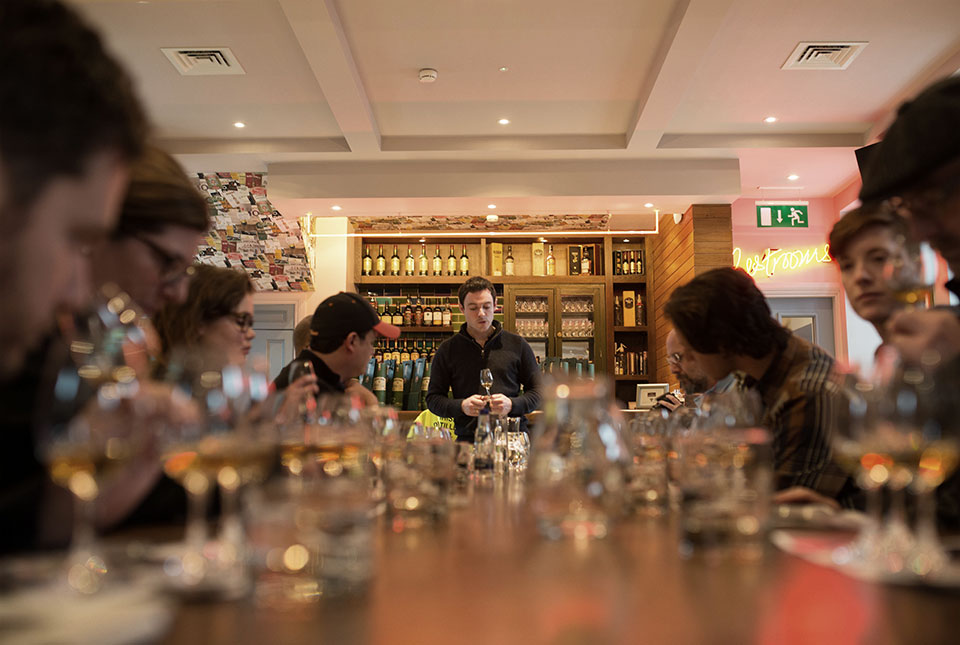 David McCabe leads the group through a tasting of fine Irish whiskey.
David McCabe leads the group through a tasting of fine Irish whiskey.
After experiencing the people and the process behind the craft of fine Irish Whiskey, I was invited to taste a series of whiskeys produced at the Midleton Distillery. One of which was Jameson 18-Year-Old Limited Reserve, one of Jameson’s most celebrated reserves. It is matured in American and European oak barrels for 18 years before bottling, meaning that a bottle opened today was first barreled before the popular advent of the mobile phone. It is a long, slow process to perfect Irish Whiskey, and Jameson 18-Year-Old Limited Reserve has matured longer than most. The result is spicy to the nose, with touches of toffee, and smooth to the tongue with flavors of fudge, spice and vanilla with a long, lingering finish. It’s the type of whiskey that neat drinkers adore, as ice or mixers only take away from the complex experience this whiskey provides.
View in gallery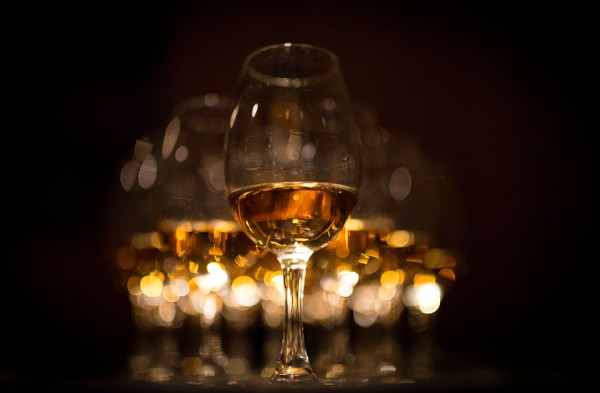 Liquid gold Jameson Irish Whiskey awaits a sip in a tasting glass.
Liquid gold Jameson Irish Whiskey awaits a sip in a tasting glass.
Beyond the bottle sampling at the Irish Whiskey Academy, McCabe led my group of whiskey lovers to a rare treat, the barrel-tasting of a spirit that is amidst the maturing process. Adjacent to the New Midleton Distillery, a massive warehouse facility stores the aging barrels in a dark, secure silence. The aroma from the aging barrels was thicker than the fog, a rich and pleasant scent that could be thought of as Irish perfume. As McCabe opened the door of one of many aging warehouses, the sheer volume of Jameson’s facility began to sink in. There are over 1,000,000 barrels on site, with a total value in the billions, making it the Fort Knox of Irish Whiskey– and I was invited inside.
View in gallery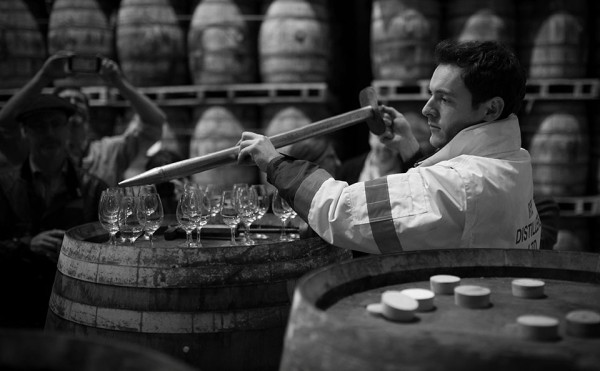 McCabe pours maturing whiskey into tasting glasses directly from an aging barrel.
McCabe pours maturing whiskey into tasting glasses directly from an aging barrel.
After entering, David McCabe invited myself and a small group of writers to sample the fruits of Jameson’s labor. Two casks, one American oak barrel and one sherry butt were opened from the top for sampling. McCabe pulled the spirit out with a sampling straw and filled a collection of glasses. These spirits were higher in alcohol-by-volume than the final bottled product, as the spirit loses a bit of its alcohol over time during maturation. While the higher strength was apparent, the flavor was rich and ultimately pleasant to the tongue. A splash of water helped with the inherent bite of the higher-alcohol spirit.
The Heritage of the Spirit: the Irish in Jameson Irish Whiskey
View in gallery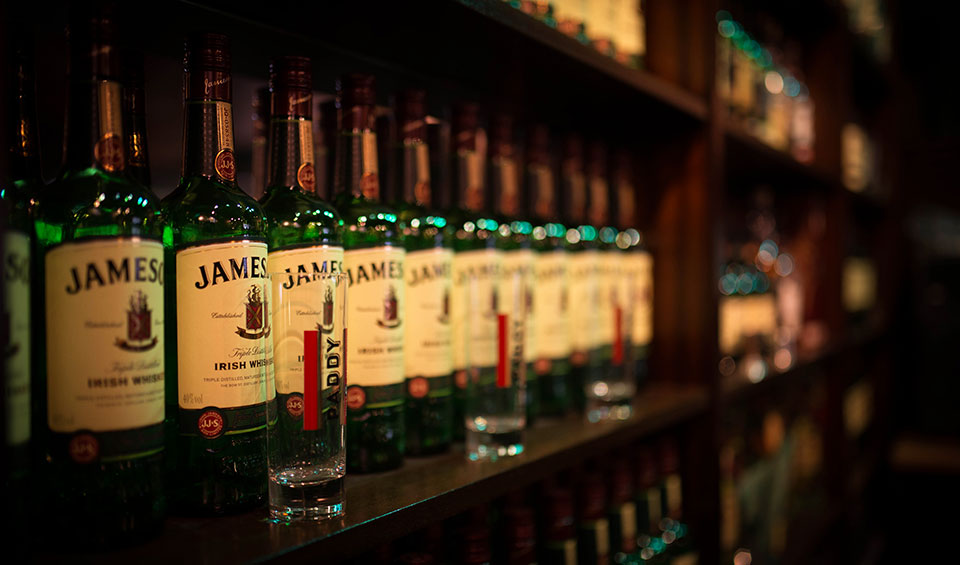 Rows upon rows of Jameson Irish Whiskey bottles line many of the interior walls at the Old Midleton Distillery.
Rows upon rows of Jameson Irish Whiskey bottles line many of the interior walls at the Old Midleton Distillery.
It was here in Midleton that I learned the story of how Jameson Irish Whiskey is produced, but the production is only half of the story. There is an inherent and profound connection between Jameson and the culture of Ireland, one that I would spent the rest of my trip exploring between County Cork and Dublin beyond. In Midleton, cattle feed on the remains of the grains that were filtered out when the pre-spirit beer was produced. In nearby Ballycotton, an unofficial tour guide ends his tour of the coast with thimbles of Jameson to sip while overlooking the sea below. In Dublin’s hip city center, artists and creatives weave Jameson’s imagery into their work, and every pub that matters has a bottle ready to pour when customers arrive. That part of the Jameson story comes next, but for now, I’m still in awe of the experience I enjoyed at the Midleton Distillery in County Cork, Ireland. As they say in Midleton almost every minute over a departing drink, Slainte!
Words and Photographs by Michael Seamus Payne for TheCoolist
As we celebrate with all of our friends who make St. Patrick’s Day great, we raise a glass to Jameson for sponsoring this story.
